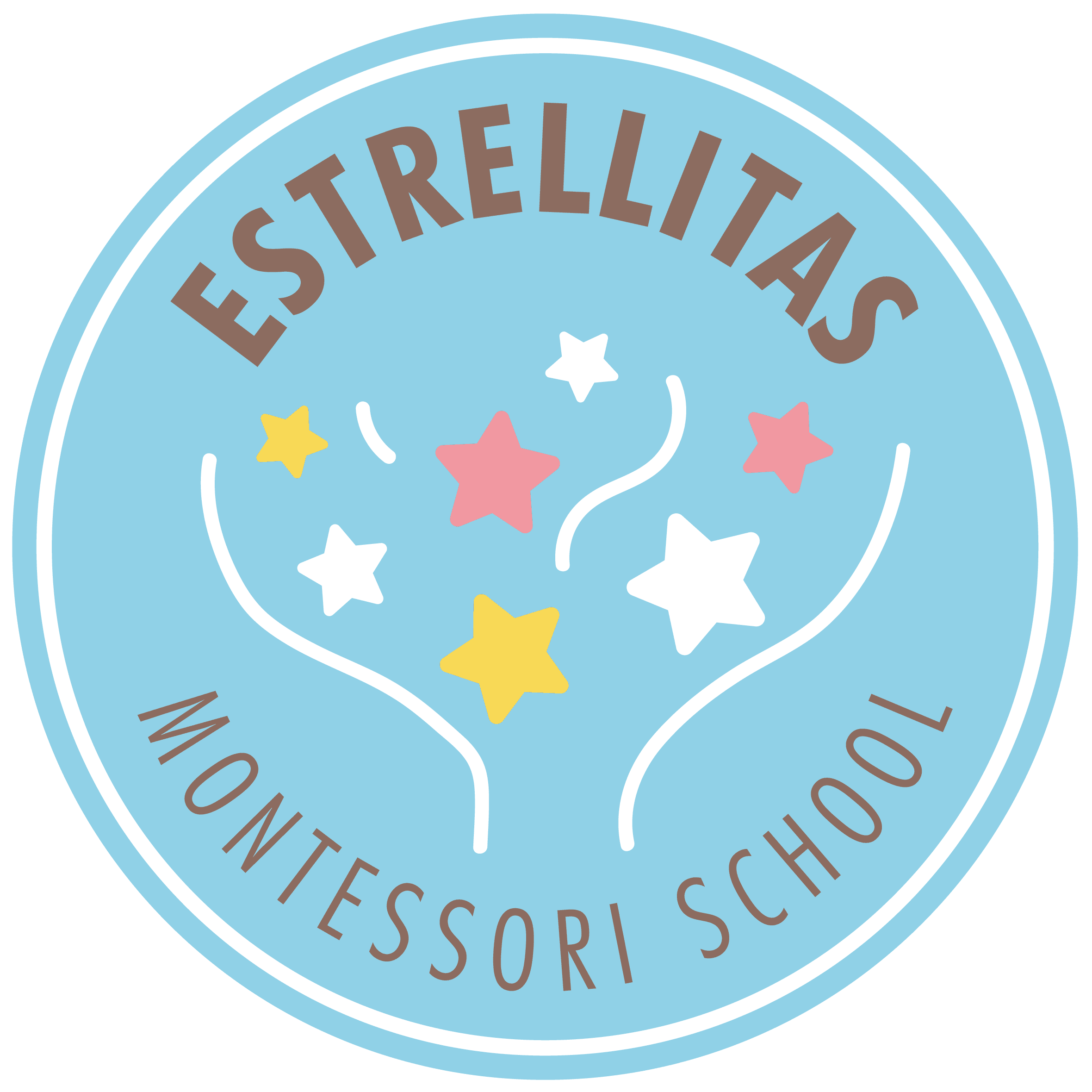Academics
our approach
Cultivating independence, diversity, and spanish fluency
Our community is dedicated to nurturing diversity and respect for others and oneself while learning the spanish language.
We’re also proud of the true Spanish immersion environment we provide. D.C. is an international city, home to diplomats and natives of other countries. We are pleased to offer a way for parents to expose children to a language and cultural experience, allowing them to grow to be citizens of a larger community and the world.
Montessori Method
Empowering Independence Through Thoughtful Design and Learning
As the Montessori philosophy outlines, children at Estrellitas have extended work periods in which they are free to choose from lessons previously presented by teachers. We believe this empowers the child to joyfully discover new skills while allowing teachers to shepherd the unique strengths of each student more effectively.
Students are offered lessons, tools, and furniture that encourage children to care for themselves, their classmates, and their environment. Instead of intruding in the learning process, we foster students’ independence. By knowing when to engage, we let the child’s inherent curiosity flourish as they develop into independent, responsible learners. This practice encourages greater concentration, along with coordinated physical movements.
Every aspect of Estrellitas has been designed to serve children. Furniture is sized just for them so that there is nothing they cannot access on their own. Classrooms are orderly and calm, allowing children to concentrate and develop greater focus on their projects. Snacks are available throughout the day so that children can serve themselves, and get to know their own personal needs.
Each day includes creative activities for the class, including art, music, dance, and yoga, storytelling, and time spent with friends learning about the day.
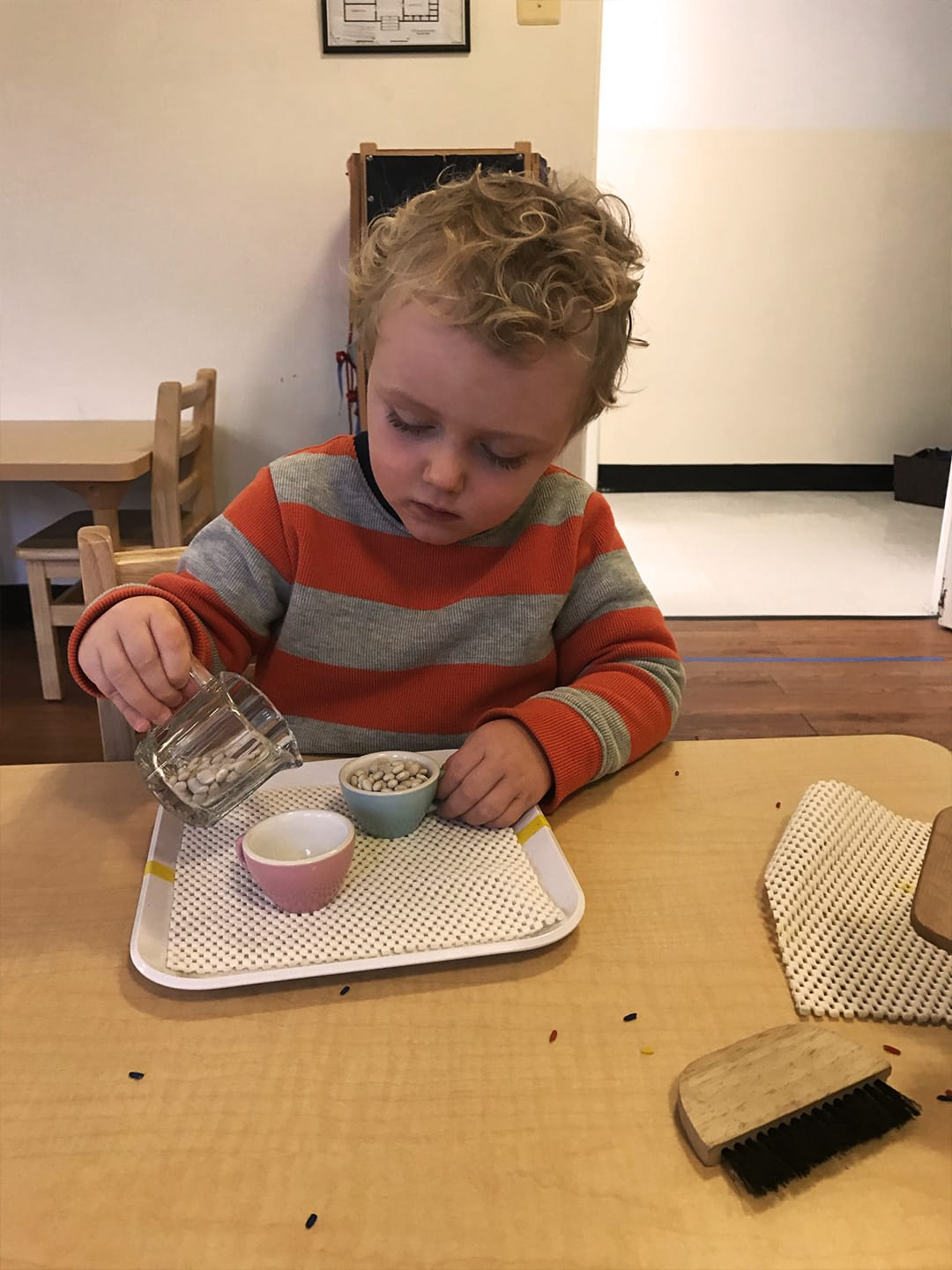
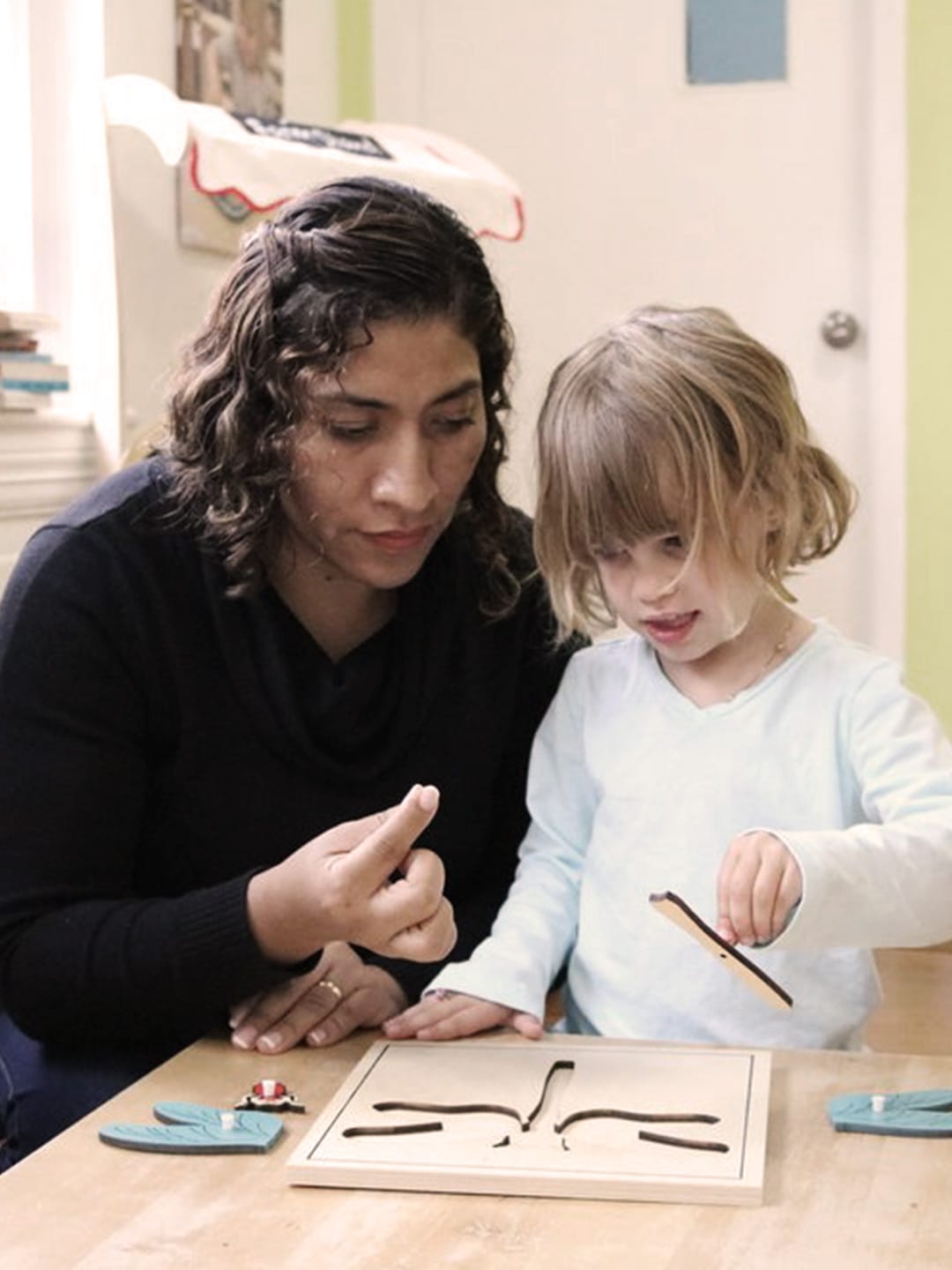
Spanish immersion model
Immersed in Spanish, Naturally and Effectively
At Estrellitas, we practice a Spanish Immersion education model. This means we provide a 100% Spanish immersive environment, which is different than a bilingual program where both English and Spanish are spoken.
It has been proven that children are most easily taught a second language at a time when they are developing early language skills. Consistent exposure reinforces the practice of new words, making learning less something they are taught and more something they absorb.
Children at Estrellitas are hearing Spanish spoken by native Spanish speakers, from Latin America and Europe. This allows for grammar patterns to develop naturally as children are already learning the language and grammar patterns of the language (or languages!) spoken at home.
Ninety percent of our families speak English at home. Built upon Montessori principles for learning, the Spanish language is picked up quite quickly by our students—including those who have never heard Spanish spoken before. For some of our students, since most of them spend the majority of their day with us, their first spoken word may be in Spanish.
Daily Routine
Our Daily Life at Estrellitas
Each morning starts with breakfast and social time, followed by Circle Time, where children connect with one another and learn about the day ahead. They then transition into their first work period, engaging with Montessori materials in a calm and purposeful environment.
Our daily rhythm includes:
- Access to snacks and water throughout the day
- A restful nap period
- Creative enrichment like art, music, and storytelling
- Full Spanish language immersion through conversation, lessons, and play
This flow is consistent, yet gentle—guided by the needs of the children and the community, not the clock.

Outdoor Exploration
Children go outdoors twice daily, weather permitting. Outdoor play supports physical health, sensory development, and social skills.
We enjoy time in:
- Our on-site outdoor playgrounds
- Nearby Hamilton Park and Rock Creek Park, walking safely in groups using a child safety rope
On rainy or cold days, children remain active indoors in one of our two indoor play spaces.
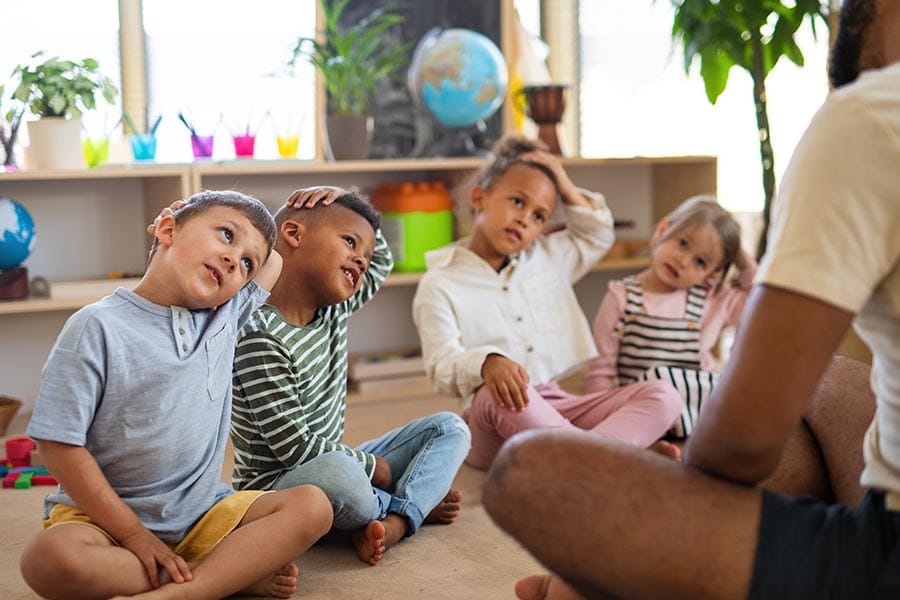
Movement & Physical Activity
Physical movement is integrated into everything we do. From songs with actions to structured movement games, children stay active while having fun and developing motor coordination.
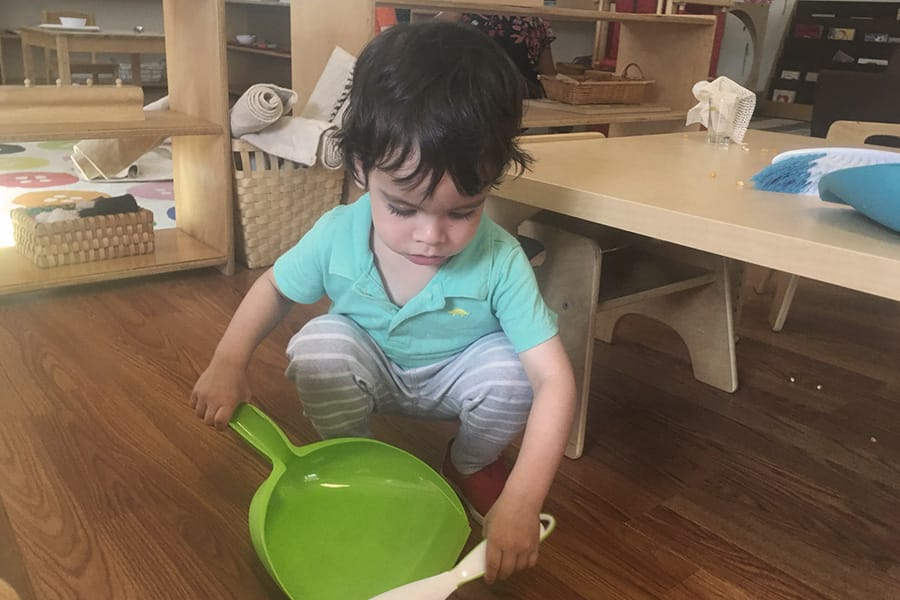
Practical life skills
A core element of Montessori education is the development of real-world skills. Children engage in activities that help them care for themselves and their environment—building independence, confidence, and responsibility.
Examples include:
- Pouring and food preparation
- Watering plants
- Celaning surfaces
- Brushing hair and dressing
- Learning to tie shoes
These purposeful tasks promote focus and pride in personal accomplishments.

Sensory & sensorial
Children learn through their senses, and our curriculum offers many ways to explore sight, sound, smell, touch, and taste.
Each classroom includes a Sensorial Area with Montessori materials—like cylinder blocks and pink towers—designed for hands-on learning and independent problem-solving. These materials are self-correcting, empowering children to think critically and build confidence.
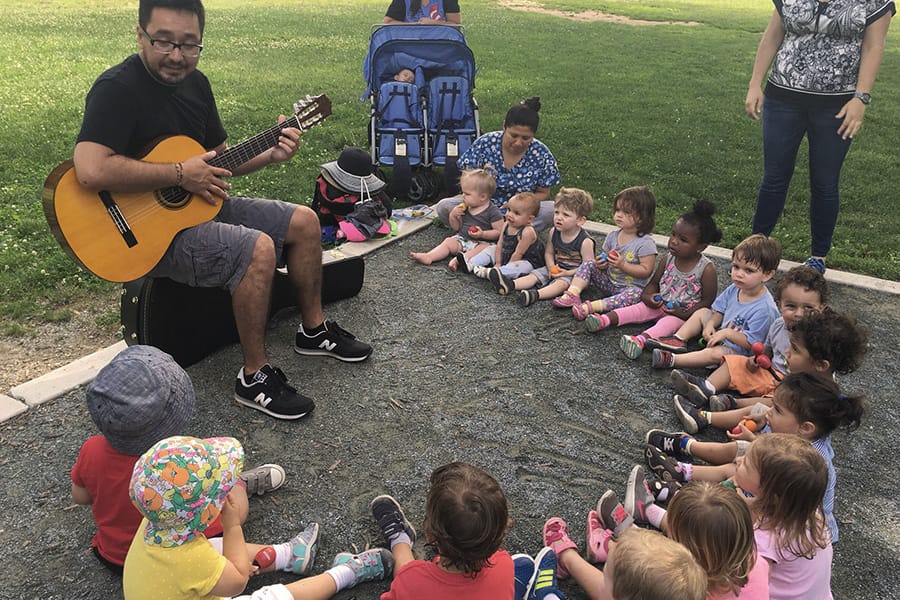
Art & Music
At Estrellitas, music is a daily companion. Songs guide transitions, support language acquisition, and bring joy to the classroom.
Our art areas are filled with open-ended, age-appropriate materials. Children are free to create based on their interests, supporting both fine motor skills and self-expression.
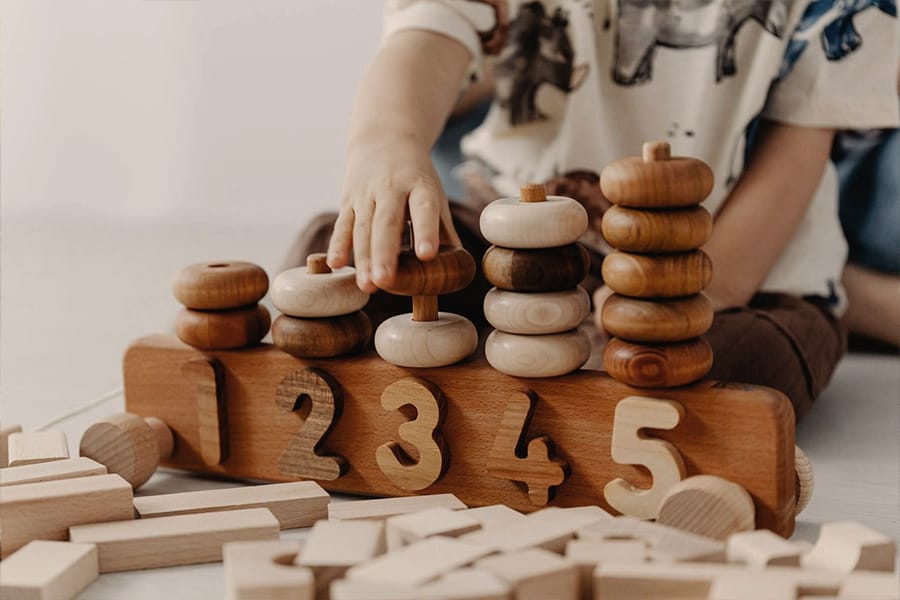
Mathematics
Math is introduced through concrete, hands-on activities using Montessori materials. Children develop foundational understanding through play and exploration.
Key concepts include:
- Counting and number recognition
- Understanding quantity
- Shapes and patterns
These early experiences make math joyful and intuitive, laying the groundwork for future learning.
classrooms
Experts in Nurturing Your Child’s Potential
Estrellitas Montessori provides a strong foundation for lifelong learning, placing children based on developmental readiness and space. Our mixed-age classrooms foster peer learning and leadership. We prioritize each child’s individual growth with care, respect, and personalized attention.
Nido
6 – 18 MONTHS
A nurturing beginning rooted in trust, exploration, and discovery.
Classrooms are thoughtfully equipped with structures that promote motor development and reflex integration—laying the foundation for crawling, pulling up, standing, and eventually walking. Low mirrors, soft mats, climbing structures, and sensory materials encourage free movement and natural development.
As infants begin to grow, our environment evolves with them: cribs are gradually replaced by low cots, and instead of high chairs, we use small tables and chairs to foster autonomy. We transition from bottles to cups as the child shows readiness, while also fully supporting nursing mothers by serving expressed breast milk with care and respect.
We introduce routines gently, empowering children to begin practicing skills such as putting away materials after use, choosing activities independently, and engaging in peaceful transitions. Our caregivers provide consistent, individualized attention, forming strong bonds that build trust and emotional security. These relationships are the heart of our Nido program.
Our Montessori-trained guides offer toddlers freedom within a carefully prepared environment that encourages exploration while maintaining structure. Each child is invited to choose from three developmentally appropriate activities at a time. These options provide just the right balance of challenge and comfort, allowing children to make decisions and experience success.
As the child demonstrates readiness, more complex activities are introduced. This dynamic, responsive approach honors each child’s unique pace and interests. It is common at this stage to witness toddlers spontaneously helping their peers—demonstrating the beginnings of leadership, empathy, and collaboration.
The Orugas classroom also nurtures emotional development, providing consistency and support as children learn to name their feelings, navigate frustrations, and build trusting relationships. Every moment is a learning opportunity—whether through movement, language, or play.
Orugas
18 – 24 MONTHS
An age of movement, language, social discovery, and growing independence.
Mariposas
24 – 36 MONTHS
Confidence, curiosity, and social connection flourish in this transformative stage.
Children begin to show interest in pre-academic concepts—such as counting, letter recognition, and sequencing—and we introduce these ideas through games, songs, and interactive storytelling. However, true to the Montessori approach, there is no pressure to achieve milestones according to age. Instead, we follow the child, encouraging them to move forward only when they are ready and interested.
Social development is especially important at this age. Children start to form more consistent friendships, practice sharing, and engage in cooperative play. Our guides support them in resolving conflicts peacefully, expressing emotions appropriately, and developing compassion for others.
Potty learning is also supported gently and respectfully in the Mariposas classroom. We observe each child for signs of readiness and provide positive encouragement throughout the process, making it a natural and empowering part of their development.
This stage emphasizes deeper concentration, responsibility, and academic exploration. Children engage in extended work cycles—periods of uninterrupted activity where they focus on chosen tasks, practice problem-solving, and develop perseverance. The classroom is rich with hands-on Montessori materials in areas such as language, math, science, geography, art, and cultural studies.
Guides support each child’s curiosity and provide individualized lessons when the child is ready. This allows students to progress academically without stress or comparison. Children are empowered to take responsibility for their learning, care for their environment, and contribute to their classroom community.
Pre-K students emerge with a strong sense of self, intrinsic motivation, and respect for others. By the time they transition to kindergarten or other programs, they are confident, kind, and eager to continue learning—hallmarks of a Montessori education.
PRE-K/PKEEP
36 – 60 MONTHS
An enriched mixed-age community fostering leadership, academic growth, and independence.
